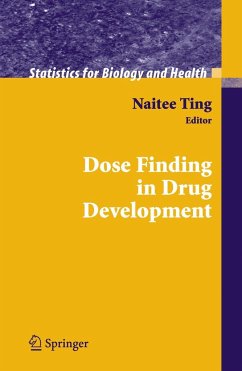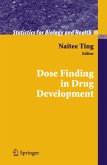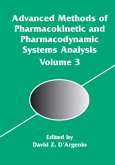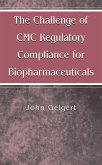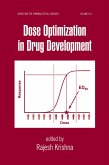If you have ever wondered when visiting the pharmacy how the dosage of your prescription is determined this book will answer your questions. It introduces the drug development process and explains the practical concerns in selecting doses for a new drug.
This book emphasizes dose selection issues from a statistical point of view. It presentsstatisticalapplicationsinthedesignandanalysisofdose-responsestudies. The importance of this subject can be found from the International Conference on Harmonization (ICH) E4 Guidance document. Establishing the dose-response relationship is one of the most important act- ities in developing a new drug. A clinical development program for a new drug can be broadly divided into four phases - namely Phases I, II, III, and IV. Phase I clinical trials are designed to study the clinical pharmacology. Information - tained from these studies will help in designing Phase II studies. Dose-response relationshipsareusuallystudiedinPhaseII.PhaseIIIclinicaltrialsarelarge-scale, long-term studies. These studies serve to con?rm ?ndings from Phases I and II. ResultsobtainedfromPhasesI,II,andIIIclinicaltrialswouldthenbedocumented and submitted to regulatory agencies for drug approval. In the United States, - viewers from Food and Drug Administration (FDA) review these documents and make a decision to approve or to reject this New Drug Application (NDA). If the new drug is approved, then Phase IV studies can be started. Phase IV clinical trials are also known as postmarketing studies.
This book emphasizes dose selection issues from a statistical point of view. It presentsstatisticalapplicationsinthedesignandanalysisofdose-responsestudies. The importance of this subject can be found from the International Conference on Harmonization (ICH) E4 Guidance document. Establishing the dose-response relationship is one of the most important act- ities in developing a new drug. A clinical development program for a new drug can be broadly divided into four phases - namely Phases I, II, III, and IV. Phase I clinical trials are designed to study the clinical pharmacology. Information - tained from these studies will help in designing Phase II studies. Dose-response relationshipsareusuallystudiedinPhaseII.PhaseIIIclinicaltrialsarelarge-scale, long-term studies. These studies serve to con?rm ?ndings from Phases I and II. ResultsobtainedfromPhasesI,II,andIIIclinicaltrialswouldthenbedocumented and submitted to regulatory agencies for drug approval. In the United States, - viewers from Food and Drug Administration (FDA) review these documents and make a decision to approve or to reject this New Drug Application (NDA). If the new drug is approved, then Phase IV studies can be started. Phase IV clinical trials are also known as postmarketing studies.
From the reviews:
"The book will be of particular interest to statisticians with some pharmaceutical industry experience who find themselves working on phase II dose finding problems. It will also be valuable for clinicians and pharmacokineticists with some statistical background. All chapters in the book are extensively referenced as they each do not pretend to exhaust their subject." Journal of Biopharmaceutical Statistics, Issue #2, 2007
"The book is a collection of chapters contributed by different authors, each addressing a different aspect of the important problem of how to identify appropriate doses of medication during the drug development process ... . Consequently the most appropriate audience is statisticians and biostatisticians who desire an overview of the medical and regulatory contexts of the design and analysis of dose response studies ... . On the whole the individual chapters are well written, and the book overall is a nice reference ... ." (C. A. Fung, Short Book Reviews, Vol. 26 (2), 2006)
"Dose Finding in Drug Development is a contemporary roadmap to the statistical design and analysis of dose-response studies, particularly those in phases II and III of drug development. ...In general, the book is easy to read. ...At roughly $5.71 per chapters, with each chapter authored by between one and three established experts, the book is a high-yield investment of any reader's time and money." (Thomas E. Bradstreet, Journal of the American Statistical Association, Vol. 102, No. 477, 2007)
"The book will be of particular interest to statisticians with some pharmaceutical industry experience who find themselves working on phase II dose finding problems. It will also be valuable for clinicians and pharmacokineticists with some statistical background. All chapters in the book are extensively referenced as they each do not pretend to exhaust their subject." Journal of Biopharmaceutical Statistics, Issue #2, 2007
"The book is a collection of chapters contributed by different authors, each addressing a different aspect of the important problem of how to identify appropriate doses of medication during the drug development process ... . Consequently the most appropriate audience is statisticians and biostatisticians who desire an overview of the medical and regulatory contexts of the design and analysis of dose response studies ... . On the whole the individual chapters are well written, and the book overall is a nice reference ... ." (C. A. Fung, Short Book Reviews, Vol. 26 (2), 2006)
"Dose Finding in Drug Development is a contemporary roadmap to the statistical design and analysis of dose-response studies, particularly those in phases II and III of drug development. ...In general, the book is easy to read. ...At roughly $5.71 per chapters, with each chapter authored by between one and three established experts, the book is a high-yield investment of any reader's time and money." (Thomas E. Bradstreet, Journal of the American Statistical Association, Vol. 102, No. 477, 2007)

